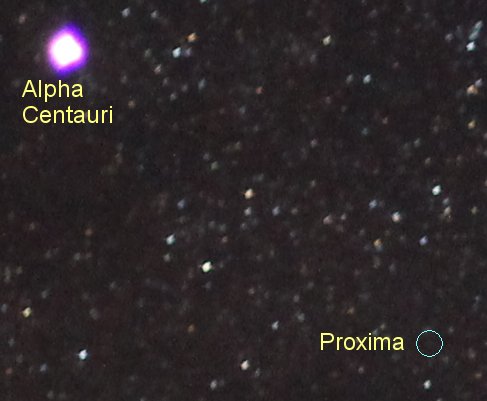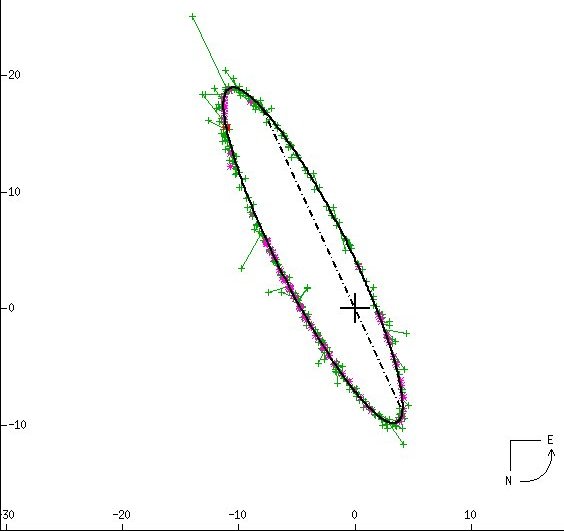 |
The picture reveals the striking difference between zero-magnitude
(-0.29) Alpha Centauri and nearly its two-degree-distant and vastly
fainter companion, Proxima Cen, which at 11th magnitude (11.05) is
just barely visible within the circle. Alpha is a double made of
a sunlike class G2 dwarf coupled with a fainter class K1 dwarf (the
two too close together to be resolvable here). But three-quarters
of Alpha's light comes from the sunlike star, so the close class K
companion does not make much difference. The picture then really
shows the dramatic difference in luminosity made by stellar mass
and temperature. Proxima, a mid-class M dwarf carrying 12 percent of the solar mass,
is to the eye some 18,000 times fainter than Alpha Cen A (which is
just 10 percent heavier than the Sun), in part because much of the
light from Proxima's 3040 Kelvin surface is radiated in the
invisible infrared. Even when the infrared is factored in,
however, in total luminosity, Proxima is still about 600 times
fainter than the Sun.
|


